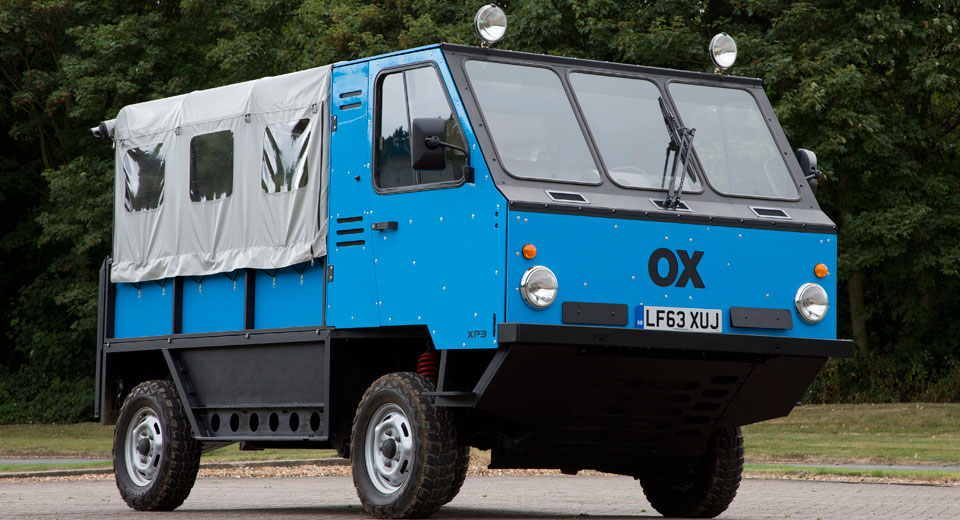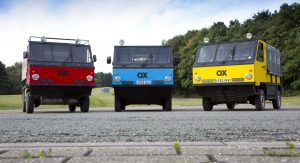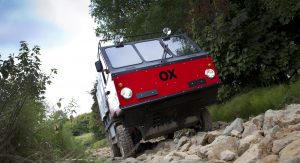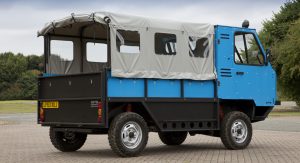The vehicle you see here is far from the most beautiful that Gordon Murray has ever designed, but it may very well be the most innovative. It’s called the Ox, and it’s poised to mobilize the developing world.
Gordon Murray, for those unfamiliar, is one of the biggest names in automotive design. He started out engineering Formula One racing cars before taking on his first road-going project in the McLaren F1 supercar. He’s since designed everything from city cars to track toys, and most has most recently been working on TVR’s revival.
This latest project was undertaken on behalf of the Global Vehicle Trust, an organization dedicated to bringing motorized transportation to underdeveloped parts of the world. Like the McLaren, the GVT Ox features a three-across cockpit with a central driving position, but that’s about where the similarities end.
The Ox is shipped packed flat like a piece of furniture from IKEA. It features high ground clearance but only two driven wheels to keep it mechanically as simple as possible for ease of maintenance and to keep costs down. The whole thing is about the size of a Toyota RAV4, but can carry nearly two tons of cargo – which is more than most full-size pickups can manage. Power comes from a 2.2-liter diesel rated at 99 horsepower and 229 lb-ft of torque, mated to a five-speed manual transmission. With a load volume of almost 250 cubic feet, it can haul eight 44-gallon drums, three Euro-standard pallets, or 13 people. That’s a whole lot of capability, but even more impressive is how the Ox is built.
The vehicle takes three people less than six hours to partially assemble. Six of these partially assembled, flat-packed vehicles can fit into a standard 40-foot high-cube container, then finally assembled at their destination, taking another three people about 12 hours of complete. They can then hop in the cabin and zip off to work on whatever task awaits them and their no-frills workhorse.
No frills, however, doesn’t mean that no thought went into it. Designing something so simple takes a lot of talent, which you can see from some of the novel solutions Murray and his team implemented on the Ox. For example the tailgate can be removed from the back of the cargo bed and used as a ramp to wheel loads on board. The egg-crate frames that serve as the bases for the rear seats can also be removed and used as “sand ladders” to help the vehicle traverse soft surfaces.
See what we mean? Innovative. Not like carbon-fiber construction, a gold-shielded engine compartment, or a 230-mph top speed. But the GVT Ox could stand to motorize remote parts of Africa the way the Ford Model T did America or the Citroën 2CV did France. Only instead of putting one in every driveway, the goal here is the put one in every village, bringing clean water for drinking, grains for eating, fertilizer for farming, and materials for building to places that couldn’t otherwise get them on their own. With the prototype now revealed, the Global Vehicle Trust hopes to garner enough interest from potential backers to put it into production.






